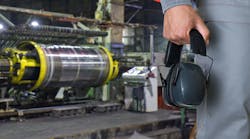Are you so busy putting out fires and reacting to downtime problems that you can’t get to the preventive maintenance work that would get you off this merry-go-round?
You can’t get additional resources because of budget constraints. All of your resources are going to getting equipment back online. A vicious cycle has set in, whereby under-maintained equipment is failing and you can’t maintain running equipment because you have to fix what’s failed. So more equipment fails.
You’d like to let some of those downtime repairs go, so you can do the maintenance that would prevent the downtime in the first place. But you know the production managers and the plant manager aren’t going to let you do that because they are already behind on orders. Or maybe they will let you. They may even insist on it. The key is to understand that not all downtime is the same.
To get things back on track, you could propose a 30-day plan which is designed to break the vicious cycle permanently. It will be a little painful, but the gains will be worth it. If management balks, you might propose a shorter period such as 21 days. You need some breathing room, and this is a good way to get it.
Begin by identifying which equipment is:
- Essential. Equipment for safety, environmental, and legally required purposes. Devote whatever maintenance resources are needed to keep this maintained.
- High-priority. Equipment that must run to keep product moving out the door or that is responsible for key contracts. Work with production people to determine what this is. Assign half of your remaining resources to maintaining and repairing this equipment.
- Low-priority. Don’t do anything with this equipment. You don’t have the resources.
- Unprioritized. Assign 15% of your remaining resources to maintaining this equipment and 5% to repairing it.
With your remaining 30% of resources, focus on solving the major causes of downtime. If you have been collecting repair data, you should have a record of the cause of each case of downtime. Put these into a spreadsheet, but limit that to only the essential and high-priority equipment.
You can sort the causes by cost (if you have the cost data) or simply by number of occurrences; either way will help give you a handle on what should command your attention. Some things will pop out when you plot the results as a bar chart.
Armed with this information, you may be persuasive in obtaining additional resources, such as:
- Outsourcing to a firm that will conduct ultrasonic testing to identify motors with bearing problems.
- Installing monitoring equipment for predictive maintenance (PdM) purposes — vibration monitors, power monitors, thermal sensors, or whatever else can alert you to historically known issues with the essential and high-priority equipment.
- Specialized training that addresses an identified training deficiency that’s resulted in downtime.
Using those resources will help you get these problems solved, so that at the end of the 30 days you can adjust resource allocation to fit the improved circumstances. Stick to the plan for the full term, or it won’t work.





